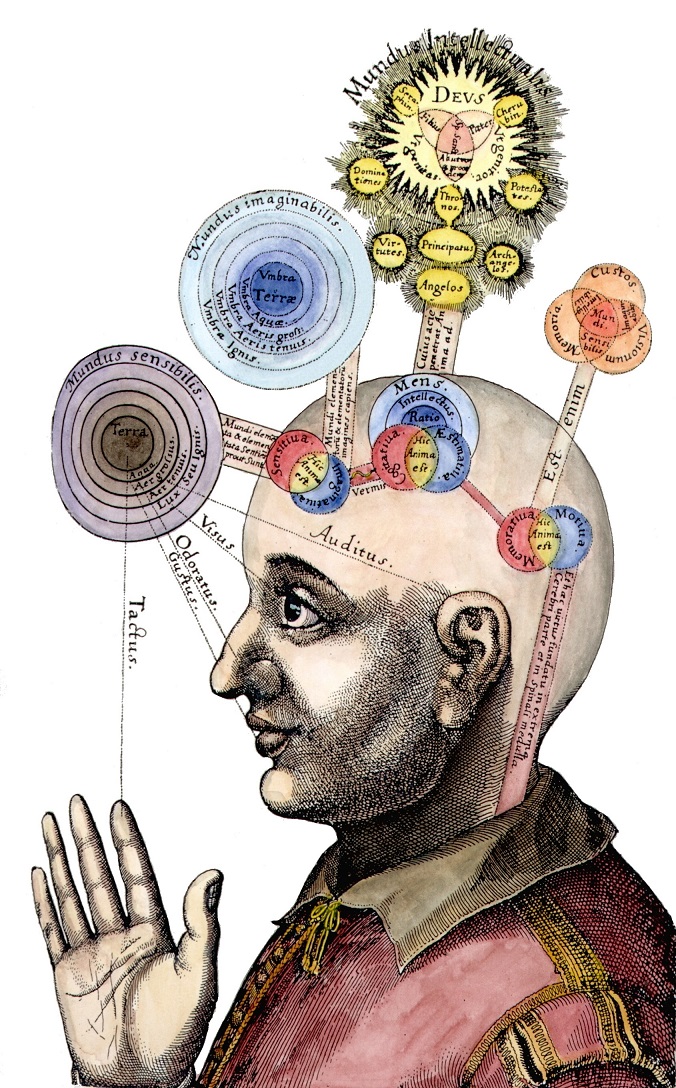
An
anomalous experience can be defined as a subjective, idiosyncratic, and/or
uncommon experience that is incongruent and/or deviates from the
sociocultural-mediated understanding of consensus reality accepted as veridical,
normative, and empirically valid by the collective prerogative. This definition
is consistent with the definition given by Cardena, Lynn, and Krippner (2000)
who describe it as “an uncommon experience or one that… is believed to deviate
from ordinary experience or from the usually accepted explanation of reality”
(p. 4). Moreover the word “anomalous” implies an experience with phenomenal
content that stands out because it is not “homolous” (Warwick & Waldram,
2010).
Anomalous experiences may be
conceptual or perceptual in nature; they may pertain to either an ascribed
schema or system of beliefs or to unimodal and/or multimodal sensory
perceptions that arise in a spontaneous fashion in the absence of an appropriate
context and without a corresponding stimulus from the sensory-corporeal world
(Williams, 2012). What is more a standard definition of the word should also
honor the evolutionary purpose served by perceptual mechanisms; if all conscious perceptions are, in fact,
cheap and quick guides to adaptive behaviors in environmental niches then the
anomalous ones amongst them could also be conceived as perceptual constructions
which are not adaptive guides to behavior (Hoffman, 2012).
Phenomenal content in conscious
awareness that is not adaptive is bound to be atypical, discontinuous,
incoherent, and irrational. Indeed, anomalous experiences are diametrically
opposed to integrated perceptions and frequently manifest as disassociations or
fragmentations of consciousness, the splitting of cognition from affective
aspects of experience, and powerful affective fluctuations manifesting
phenomenologically as polarized expressions of good and evil, omnipotent
control and helplessness, creative and destructive forces, heroic striving,
groundlessness, and parallel dimensions. More often than not feelings of
euphoria, liberation, and interconnectedness are also present (Williams, 2012).
Positive internal appraisals of this content [or non-distressing anomalous
experiences] attract to themselves the label of “spiritual” whereas negative
ones that are significantly distressing and ensue in intellectual,
interpersonal, social, and occupational impairment are pathologized and deemed
“psychotic” under the hegemony of the biomedical model and the Western mind
sciences (McCarthy-Jones, 2012).
Some anomalous experiences like
autoscopic phenomena, multimodal hallucinations, and synaesthesias may be
conceptualized within the dominant, existing scientific model. Other anomalous
experiences like extrasensory perception, anomalous photography (the mind’s
ability to influence photographs), levitation, teleportation, and bilocation call
for a steadfast revision of the Cartesian-Kantian epistemological box couching
the unidimensional model of time, as well as standard notions of a
materialistic universe. Others still, for example reincarnation-type
experiences/past-life memories, out-of-body experiences (OBEs), near-death
experiences (NDEs), drop-in communicators, and séances involving proxy sitters,
undermine the conventional product model of mind-brain that cognitive
psychology and cognitive neuroscience are predicated on.
Theoretical
models congruent with contemporary mechanistic science have occasionally been
propounded to account for them, despite their subsistence near or outside the
empirical frontiers of eliminative materialism. For instance “Weak Quantum
Theory” posits that anomalous “psi” experiences and veridical past-life
memories occur because there is an entanglement of nonlocal minds in a latent collective
unconscious (Health, 2011). Others, like teleportation and apports, are qualitatively
closer to phenomena we see in science-fiction and so incongruent with the
materialistic agenda of the hard sciences that no explanatory model exists or
has been proposed to account for them. Collectively, anomalous experiences
illuminate the gaping fissures, the obvious inadequacies of our dominant albeit
myopic worldview.
References
Cardeña,
E. E., Lynn, S. J. E., & Krippner, S. E. (2000). Varieties of anomalous
experience: Examining the scientific evidence. American Psychological
Association.
Hoffman,
D. D. (2012). The construction of visual reality. In Hallucinations (pp.
7-15). Springer New York.
Pamela
Rae Heath, M. D. (2011). Mind-matter interaction: A review of historical
reports, theory and research. McFarland.
Warwick,
S., & Waldram, R. (2010). Exploring the Transliminal: Qualitative Studies. Psychosis
and Spirituality: Consolidating the New Paradigm, Second Edition, 175-191.
Williams,
P. (2014). Rethinking madness: Towards a paradigm shift in our understanding
and treatment of psychosis. Sky’s Edge Publishing.








